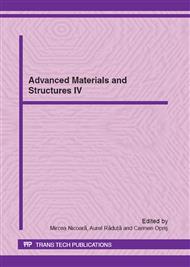p.114
p.118
p.124
p.134
p.140
p.144
p.150
p.158
p.164
Quality Control of Composite Material Pipes by Infrared Thermography
Abstract:
The paper presents some aspects concerning the use of infrared thermography (IRT) in the evaluation of composite pipes integrity. Composite pipelines made up of glass fibres reinforced epoxy resins are increasingly used, especially in oil and gas industry, for their good mechanical properties, combined with reduced weight and excellent behaviour under hostile environment conditions. Taking into account that high reliability is required for such pipe networks, it is mandatory to choose reliable non-destructive inspection (NDI) methods to achieve efficient structural health monitoring. The main advantages of the IRT inspection are: non-contact and non-dangerous examination. In order to characterize the integrity of composites pipes, first of all the researches were interested in obtaining a set of reference images and then to examine the samples before and after the impact stress test. The conclusions point out the schemes and the optimal parameters of evaluation as well as the application limits of thermographic inspection
Info:
Periodical:
Pages:
140-143
Citation:
Online since:
May 2012
Authors:
Price:
Сopyright:
© 2012 Trans Tech Publications Ltd. All Rights Reserved
Share:
Citation:


